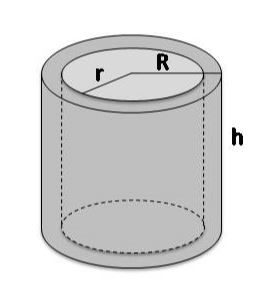Pipe Volume Calculator
This pipe volume calculator estimates the volume of a pipe as well as the mass of a liquid that flows through it. This calculator is a helpful tool for everyone who needs to know the exact volume of water in a pipe. It will be helpful to you if you're, designing an irrigation system for your garden.
Keep on reading to learn what a cylinder is and the volume of a pipe formula.
Pipe volume calculator
Knowing the volume of a pipe might be useful for many reasons. It will benefit private homeowners, civil engineers, and construction workers. For example, you may want to know the water capacity of your in-home heating system or wonder if the pipe diameter you have chosen will be sufficient for refilling the garden pond.
This is the reason why we created the pipe volume calculator. This tool provides you with the volume of a specific pipe and the weight of the water (or other liquid) inside it. It is simple to use and effective. All you need to do is enter the pipe size – its inner diameter and the length. It doesn't matter whether you use the metric or imperial system of units because you can freely switch between them using the drop-down list.
By default, the calculation of liquid weight is done for water (its density equals 997 kg/m³). If you need to do the calculations for other fluids, type in the density of your specific liquid.
Below, we prepared an explanation of the volume of a pipe formula and a step-by-step example of calculations to show you how to properly use the pipe volume calculator.
Volume of a pipe – formula
By shape, a pipe is a hollow right cylinder. But what is a cylinder? We can see them around us every day. A cylinder is a solid with two bases, which are usually circular, and always congruent and parallel to each other. The 'unrolled' side of a cylinder creates a rectangle. The height of a cylinder is the distance between the bases (in the case of pipes, it is its length). The radius of a cylinder is the radius of its base. Keep in mind that when you have a cylinder, the diameter is a doubled radius. So, for calculations, you need to halve the diameter.

💡 You can learn more about cylinders by checking out our right cylinder calculator, our cylinder volume calculator, and our surface area of a cylinder calculator, to name a few related tools.
The volume of a 3-dimensional solid is the amount of space it occupies. For a pipe, it is the inner volume (you need to take the inner diameter instead of the outer one).
To express the volume, we use cubic units (for metric cm³, dm³, m³, and for imperial in³ and ft³). To get accurate results, use one unit consistently throughout the whole computation.
The formula for the volume of a cylinder is:
cylinder volume = π × radius² × height.
For a pipe, use its length instead of height: pipe volume = π × radius² × length, where radius = inner diameter/2. The pipe volume is equal to the volume of the liquid inside (if fully filled with it). We take the mass of the liquid from the transformed density formula. So, respectively: liquid mass = volume × liquid density.
Volume of water in pipe – calculation example
Let's see how to use the pipe volume calculator correctly. For an example calculation, we need a few assumptions. Let's assume we will calculate the volume of a 6-meter length pipe with an inner diameter of 15 centimeters. The pipe is used to transport water. Let's put these data into the calculator to find the volume of the water in the pipe and its mass.
-
First, enter the pipe's diameter:
inner diameter = 15 cm. -
Then, type in its length:
length = 6 m. -
Check the liquid density. The default value is set for water, which is correct in our case.
Liquid density = 997 kg/m³. -
Now, the calculation results are available for you:
volume = 0.106 m³and theliquid mass = 105.71 kg.
FAQs
What is the volume of a 6 feet pipe with a 2-inch inner diameter?
The pipe volume is 0.13 cubic feet or 0.979 US gallons. To calculate this answer, follow these steps:
-
Multiply the diameter by 0.08 to convert it to feet,
2 in × 0.083 ~ 0.17 ft -
Find the volume of the pipe using the formula
V = π × d² × l/4 = π × 0.17 × 0.17 × 6/4 = 0.13 cu-ft -
Verify your result with our pipe volume calculator.
How do you determine the diameter of a pipe from its volume?
To obtain the diameter d of a pipe from its volume V and length l, you must use the formula: d = 2 × √(V/π × l). Be cautious of the units you use.
What is the longest pipeline in the world?
The longest pipeline in the world is the Coastline pipeline, which spans from Texas to New York over a distance of 5,500 miles (8,850 km). It transports oil and jet fuel to various locations along the way.
How do I calculate the volumetric flow rate of my pipes?
You can determine the volumetric flow rate of your pipe through the following steps:
- Acquire a container of known volume
Vand a stop-clock. - Fill the container to its capacity with water from your pipe while timing the event from empty to full.
- Divide the volume
Vby the timettaken to fill the container to obtain the volumetric flow rate:V/t.